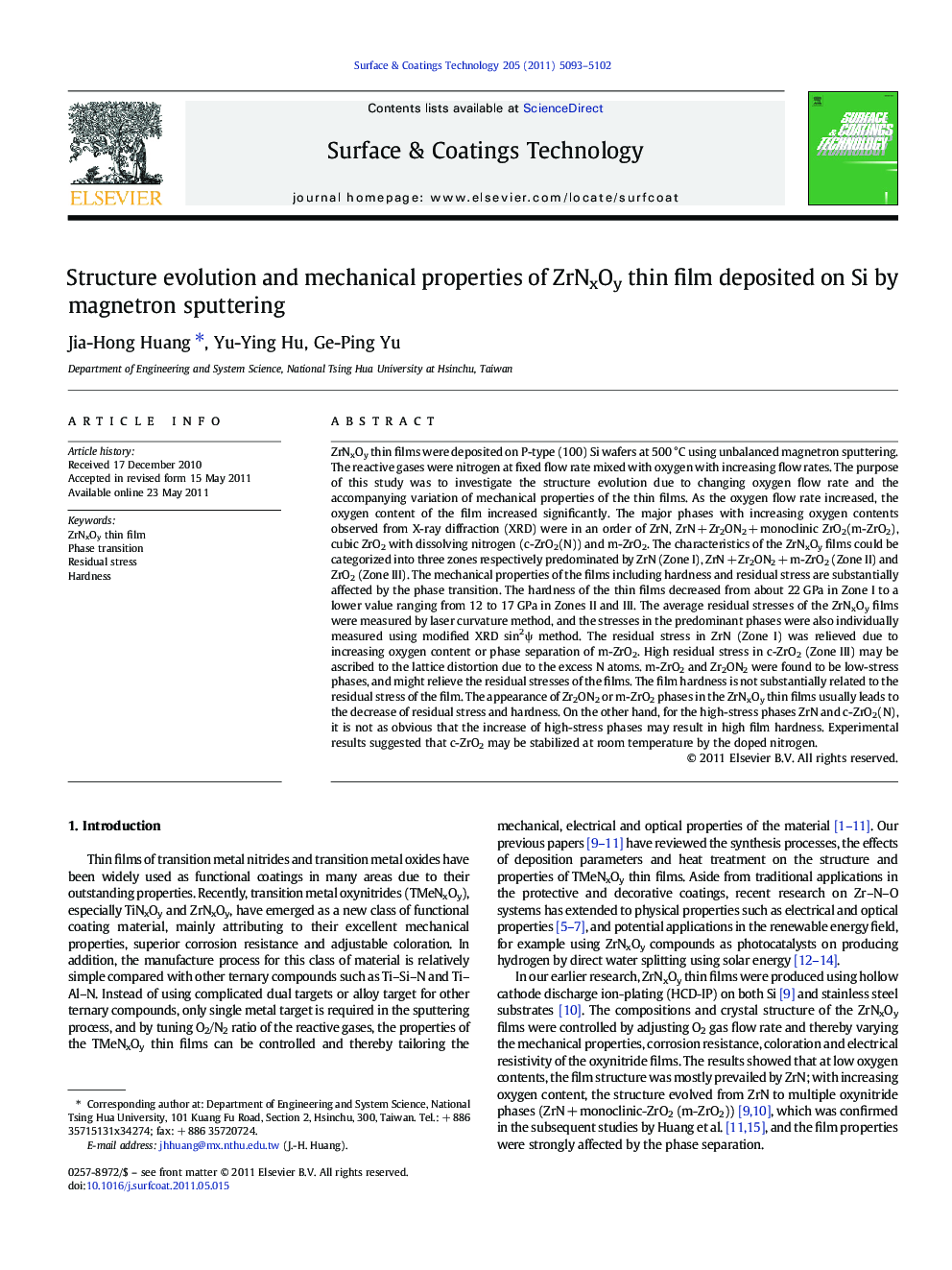| کد مقاله | کد نشریه | سال انتشار | مقاله انگلیسی | نسخه تمام متن |
|---|---|---|---|---|
| 1658557 | 1517677 | 2011 | 10 صفحه PDF | دانلود رایگان |

ZrNxOy thin films were deposited on P-type (100) Si wafers at 500 °C using unbalanced magnetron sputtering. The reactive gases were nitrogen at fixed flow rate mixed with oxygen with increasing flow rates. The purpose of this study was to investigate the structure evolution due to changing oxygen flow rate and the accompanying variation of mechanical properties of the thin films. As the oxygen flow rate increased, the oxygen content of the film increased significantly. The major phases with increasing oxygen contents observed from X-ray diffraction (XRD) were in an order of ZrN, ZrN + Zr2ON2 + monoclinic ZrO2(m-ZrO2), cubic ZrO2 with dissolving nitrogen (c-ZrO2(N)) and m-ZrO2. The characteristics of the ZrNxOy films could be categorized into three zones respectively predominated by ZrN (Zone I), ZrN + Zr2ON2 + m-ZrO2 (Zone II) and ZrO2 (Zone III). The mechanical properties of the films including hardness and residual stress are substantially affected by the phase transition. The hardness of the thin films decreased from about 22 GPa in Zone I to a lower value ranging from 12 to 17 GPa in Zones II and III. The average residual stresses of the ZrNxOy films were measured by laser curvature method, and the stresses in the predominant phases were also individually measured using modified XRD sin2ψ method. The residual stress in ZrN (Zone I) was relieved due to increasing oxygen content or phase separation of m-ZrO2. High residual stress in c-ZrO2 (Zone III) may be ascribed to the lattice distortion due to the excess N atoms. m-ZrO2 and Zr2ON2 were found to be low-stress phases, and might relieve the residual stresses of the films. The film hardness is not substantially related to the residual stress of the film. The appearance of Zr2ON2 or m-ZrO2 phases in the ZrNxOy thin films usually leads to the decrease of residual stress and hardness. On the other hand, for the high-stress phases ZrN and c-ZrO2(N), it is not as obvious that the increase of high-stress phases may result in high film hardness. Experimental results suggested that c-ZrO2 may be stabilized at room temperature by the doped nitrogen.
Research highlight
► The major phases in the ZrNxOy films are ZrN, ZrN+Zr2ON2+m-ZrO2, c-ZrO2 and m-ZrO2.
► Nitrogen content may increase the stability of c-ZrO2 at room temperature.
► Zr2ON2 or m-ZrO2 usually leads to the decrease of residual stress and film hardness.
► The high-stress phases (ZrN and c-ZrO2(N)) may not result in high film hardness.
Journal: Surface and Coatings Technology - Volume 205, Issues 21–22, 25 August 2011, Pages 5093–5102